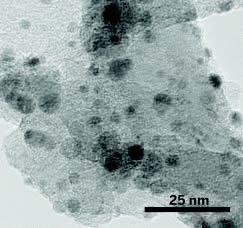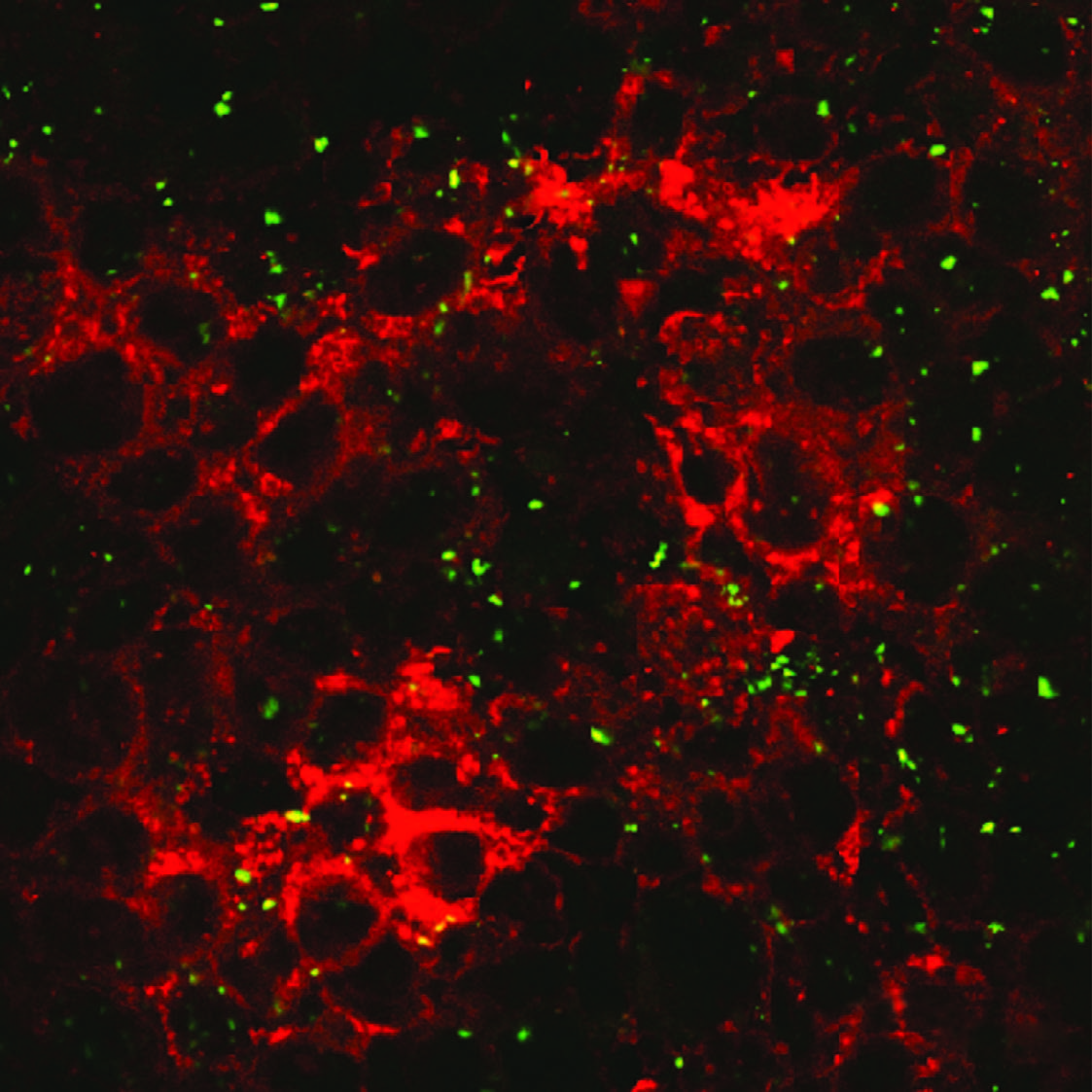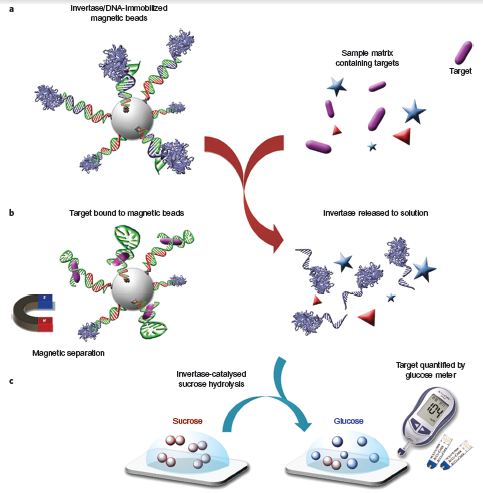
Kannan Krishnan to Receive 2012 IEEE Donald G. Fink Prize for Best Paper
February 29, 2012
 Kannan M. Krishnan, an engineer who has applied his expertise in biomedical nanomagnetics to provide a much-needed paper detailing the advances and challenges in using magnetic nanoparticles for medical applications, is being honored by IEEE with the 2012 IEEE Donald G. Fink Prize Paper Award. IEEE is the world’s largest technical professional association.
Kannan M. Krishnan, an engineer who has applied his expertise in biomedical nanomagnetics to provide a much-needed paper detailing the advances and challenges in using magnetic nanoparticles for medical applications, is being honored by IEEE with the 2012 IEEE Donald G. Fink Prize Paper Award. IEEE is the world’s largest technical professional association.
The award, sponsored by the IEEE Life Members Committee and given to an outstanding survey, review or tutorial paper appearing in any of the IEEE Transactions, Proceedings of the IEEE, journals or magazines, recognizes Krishnan for his paper “Biomedical Nanomagnetics: A Spin Through Possibilities in Imaging, Diagnostics and Therapy”. Check it out here. The award will be presented on May 20, 2012 at the IEEE International Magnetics Conference in Vancouver, Canada.
If you come to our next Magnetic Carrier Meeting, then you will have a chance to meet Kannan yourself, as he is going to give an invited talk about the magnetic particles that are best suited for Magnetic Particle Imaging (MPI).
Iron Nanoparticles Embedded in Nanofibres for Olefin Synthesis
February 20, 2012
 Olefins with up to four carbon atoms are key building blocks for synthesis of polymers, cosmetics, drugs, solvents, and other commercial products. The lightweight compounds are typically produced by the petroleum industry by steam cracking naphtha, which is derived from crude oil. Cracking converts long-chain hydrocarbons to short ones and introduces unsaturation. That process has been carried out on a global scale for decades, but the associated environmental consequences and limited petroleum supplies have driven researchers to seek alternative routes to C 2 –C 4 olefins.
Olefins with up to four carbon atoms are key building blocks for synthesis of polymers, cosmetics, drugs, solvents, and other commercial products. The lightweight compounds are typically produced by the petroleum industry by steam cracking naphtha, which is derived from crude oil. Cracking converts long-chain hydrocarbons to short ones and introduces unsaturation. That process has been carried out on a global scale for decades, but the associated environmental consequences and limited petroleum supplies have driven researchers to seek alternative routes to C 2 –C 4 olefins.
Hirsa M. Torres Galvis and Krijn P. de Jong of Utrecht University and coworkers have formulated iron catalysts that sidestep some of those limitations. The team found that supporting iron oxide nanoparticles on high-surface-area materials that interact weakly with the particles leads to stable, active, and fairly selective
catalysts. Specifically, they found that depending on reaction conditions, catalysts
consisting of sodium and sulfur-doped iron oxide nanoparticles supported
on carbon nanofibers and other samples supported on α-alumina convert syngas to C 2 –C 4 olefins with roughly 60% selectivity. Many of the catalyst samples remained stable throughout a 60-hour test period, the team reports.
Check out the details for yourself here.
Oral Exposure to Polystyrene Nanoparticles Affects Iron Absorption
February 20, 2012
 Polystyrene nanoparticles are generally considered nontoxic, but a new study by Michael Shuler, Gretchen Mahler et al now suggests that ingesting them can influence iron uptake and transport. There might be a mechanism by which ingested nanoparticles exert a subtle yet harmful effect. The researchers examined how carboxylated polystyrene particles just 50 nm in diameter behaved in an in vitro model of the human intestinal epithelium and in tests with live chickens given doses that mimic potential human exposure. Intestinal cells in the in vitro model showed increased iron transport because of disruptions to the cell membrane. Chickens with acute nanoparticle exposure had lower iron absorption than either unexposed or chronically exposed chickens. The researchers found that the villi—tiny projections in the intestinal walls—of chickens subjected to
Polystyrene nanoparticles are generally considered nontoxic, but a new study by Michael Shuler, Gretchen Mahler et al now suggests that ingesting them can influence iron uptake and transport. There might be a mechanism by which ingested nanoparticles exert a subtle yet harmful effect. The researchers examined how carboxylated polystyrene particles just 50 nm in diameter behaved in an in vitro model of the human intestinal epithelium and in tests with live chickens given doses that mimic potential human exposure. Intestinal cells in the in vitro model showed increased iron transport because of disruptions to the cell membrane. Chickens with acute nanoparticle exposure had lower iron absorption than either unexposed or chronically exposed chickens. The researchers found that the villi—tiny projections in the intestinal walls—of chickens subjected to
chronic exposure remodeled themselves to increase the surface area for iron absorption.
Although people do not normally eat polystyrene nanoparticles, other nanoparticles commonly used as food additives (e.g., titanium dioxide and
silicates) might have similar effects.
Check out the details here.
A Personal Analytical Meter for Everything
February 17, 2012Portable, low-cost and quantitative detection of a broad range of targets at home and in the field has the potential to revolutionize medical diagnostics and environmental monitoring. Taking advantage of the wide availability and low cost of the pocket-sized personal glucose meter—used worldwide by diabetes sufferers—Yu Xiang and Yi Lu demonstrate a method to use such meters to quantify non-glucose targets, ranging from a recreational drug (cocaine, 3.4 mM detection limit) to an important biological cofactor (adenosine, 18 mM detection limit), to a disease marker (interferon-gamma of tuberculosis, 2.6 nM detection limit) and a toxic metal ion (uranium, 9.1 nM detection limit). The method is based on the target-induced release of invertase from a functional-DNA–invertase conjugate bound to magnetic particles. The released invertase converts sucrose into glucose, which is detectable using a normal glucose meter. The approach should be easily applicable to the detection of many other targets through the use of suitable functional-DNA partners (aptamers DNAzymes or aptazymes).

Check the original Nature Chemistry article here.
Magnetic Detergent
February 13, 2012
 A research team led by Julian Eastoe of England’s University of Bristol recently developed an iron-based surfactant that responds to a magnetic field. The researchers showed that their detergent, composed of an alkane chain with a cationic head group and a tetrachloroferrate(III) counterion (FeCl4–), is capable of being drawn from an aqueous phase through an organic solvent by a small magnet. With small-angle neutron scattering, the team also proved that in water, their magnetic surfactant forms small clusters called micelles. Conventional soaps and detergents also form these structures, which give the cleaners their functionality.
A research team led by Julian Eastoe of England’s University of Bristol recently developed an iron-based surfactant that responds to a magnetic field. The researchers showed that their detergent, composed of an alkane chain with a cationic head group and a tetrachloroferrate(III) counterion (FeCl4–), is capable of being drawn from an aqueous phase through an organic solvent by a small magnet. With small-angle neutron scattering, the team also proved that in water, their magnetic surfactant forms small clusters called micelles. Conventional soaps and detergents also form these structures, which give the cleaners their functionality.
When asked why he and his team decided to try making a surfactant that’s switched on by a magnet, Eastoe says they were motivated by “good old-fashioned scientific curiosity.” There has to be a place for that type of inquiry
in science, he contends. To read more, check this Angewandte Chemie article here.
Special Journal Issue about Magnetic Nanoparticles
February 03, 2012Sometime in 2011, a special issue about magnetic nanoparticles was published in two different journals, the International Journal of Molecular Sciences and the Materials journal. Professor Jon Dobson was the guest editor. Check it out! It is open access and can be accessed here:
- IJMS
Magnetic Fluid Targets Insulin-Related Amyloidosis
January 27, 2012
Researchers from the Institute of Experimental Physics at the Slovak Academy of Sciences (IEP SAS) in Kosice are investigating the interaction of albumin-modified magnetic fluids with insulin amyloid aggregates. The research tackles com.jpg) plications associated with diabetes, where amyloid deposits (fibrils) can form in patients near the site of insulin injections. Results indicate that incubation of insulin amyloid fibrils with albumin-modified magnetic fluid leads to the significant destruction of aggregates. The extent of the depolymerizing activity was affected by the amount of albumin used for magnetic fluid modification and mainly depends on the size of nanoparticles.
plications associated with diabetes, where amyloid deposits (fibrils) can form in patients near the site of insulin injections. Results indicate that incubation of insulin amyloid fibrils with albumin-modified magnetic fluid leads to the significant destruction of aggregates. The extent of the depolymerizing activity was affected by the amount of albumin used for magnetic fluid modification and mainly depends on the size of nanoparticles.
The team's findings represent a starting point for the application of active albumin-modified magnetic fluids as therapeutic agents targeting insulin amyloidosis. For the original paper, check out this link.
Progress in Advanced Nanoscale Magnetic Materials for Brain Cancer Detection and Therapy
January 25, 2012Elena Rozhkova from Argonne National Lab wrote a nice review article on recent progress in the development of advanced nanoscale photoreactive, magnetic and multifunctional materials applicable to brain cancer diagnostics, imaging, and therapy, with an emphasis on the latest contributions and the novelty of the approach, along with the most promising emergent trends. Check it out here.
For more information, check out our Archives.
September 2017

Search this site with the power of
